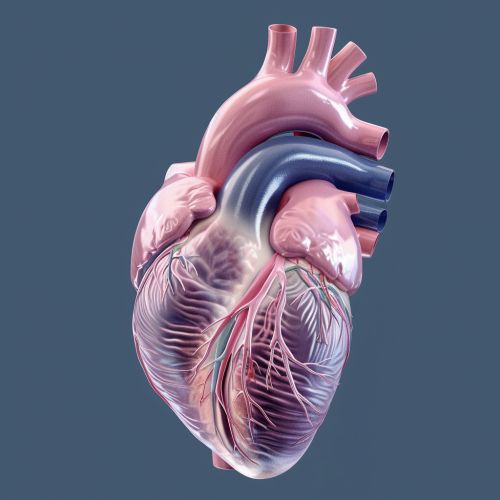Mitral stenosis
Overview
Mitral stenosis is a cardiovascular disease that affects the mitral valve of the heart. The condition is characterized by a narrowing of the valve, which restricts blood flow from the left atrium to the left ventricle. This can lead to a variety of symptoms and complications, including atrial fibrillation, heart failure, and pulmonary edema. Mitral stenosis is most commonly caused by rheumatic fever, a disease that can damage the heart valves.


Pathophysiology
In mitral stenosis, the mitral valve becomes thickened and calcified, which prevents it from opening fully. This restricts the flow of blood from the left atrium to the left ventricle, leading to an increase in pressure in the left atrium and the pulmonary veins. Over time, this can cause the left atrium to enlarge and can lead to atrial fibrillation, a condition in which the heart beats irregularly.
Causes
The most common cause of mitral stenosis is rheumatic fever, an inflammatory disease that can develop as a complication of untreated streptococcal infection. Other causes include congenital heart disease, calcification of the mitral valve, and endocarditis, an infection of the inner lining of the heart.
Symptoms
Symptoms of mitral stenosis can vary widely and may not appear until the disease has progressed significantly. Common symptoms include shortness of breath, fatigue, palpitations, chest pain, and swelling in the legs and feet. In severe cases, patients may experience syncope, a temporary loss of consciousness due to a decrease in blood flow to the brain.
Diagnosis
Diagnosis of mitral stenosis typically involves a combination of physical examination, medical history, and diagnostic tests. During a physical examination, a doctor may listen to the heart with a stethoscope to detect a heart murmur, a sound caused by turbulent blood flow through the narrowed valve. Diagnostic tests may include an echocardiogram, which uses sound waves to create images of the heart, and a cardiac catheterization, a procedure that involves inserting a catheter into a blood vessel and guiding it to the heart to measure pressures and assess the severity of the stenosis.
Treatment
Treatment for mitral stenosis depends on the severity of the disease and the patient's symptoms. In mild cases, treatment may involve monitoring the condition and managing symptoms with medications. In more severe cases, surgical procedures may be necessary to repair or replace the mitral valve. These may include balloon valvuloplasty, a procedure in which a balloon is inflated inside the valve to widen it, or mitral valve replacement, in which the diseased valve is replaced with a mechanical or biological valve.
Prognosis
The prognosis for patients with mitral stenosis depends on the severity of the disease and the effectiveness of treatment. With appropriate treatment, many patients can lead normal, active lives. However, untreated or severe mitral stenosis can lead to serious complications, including heart failure and stroke.
